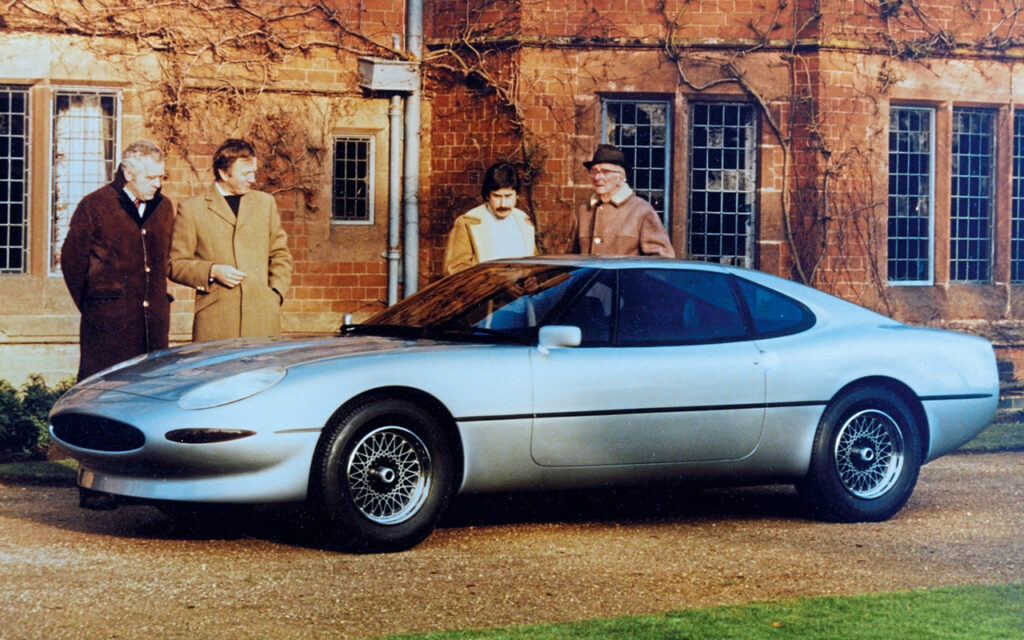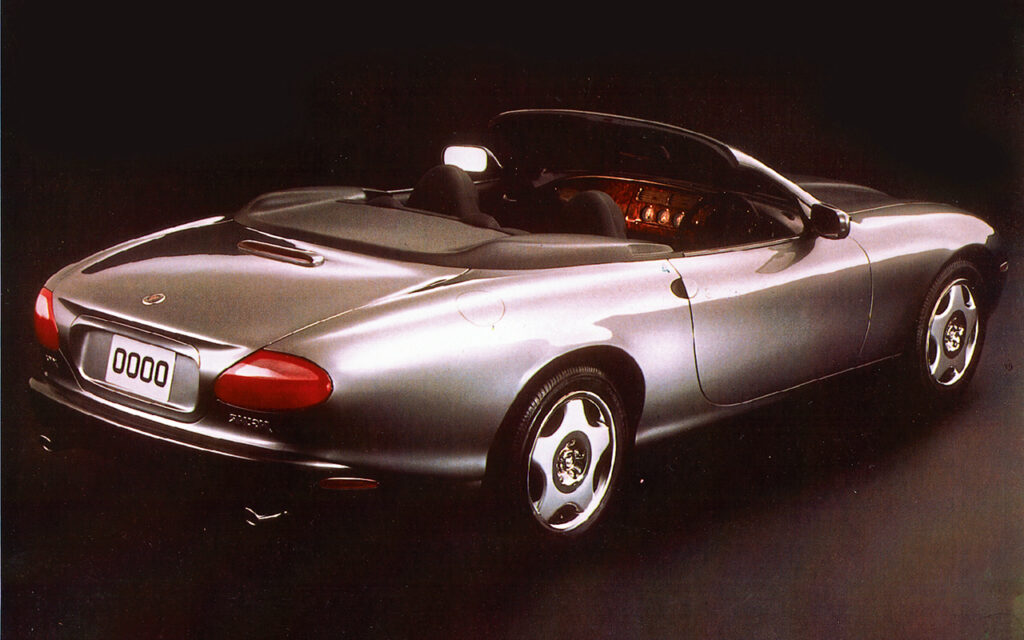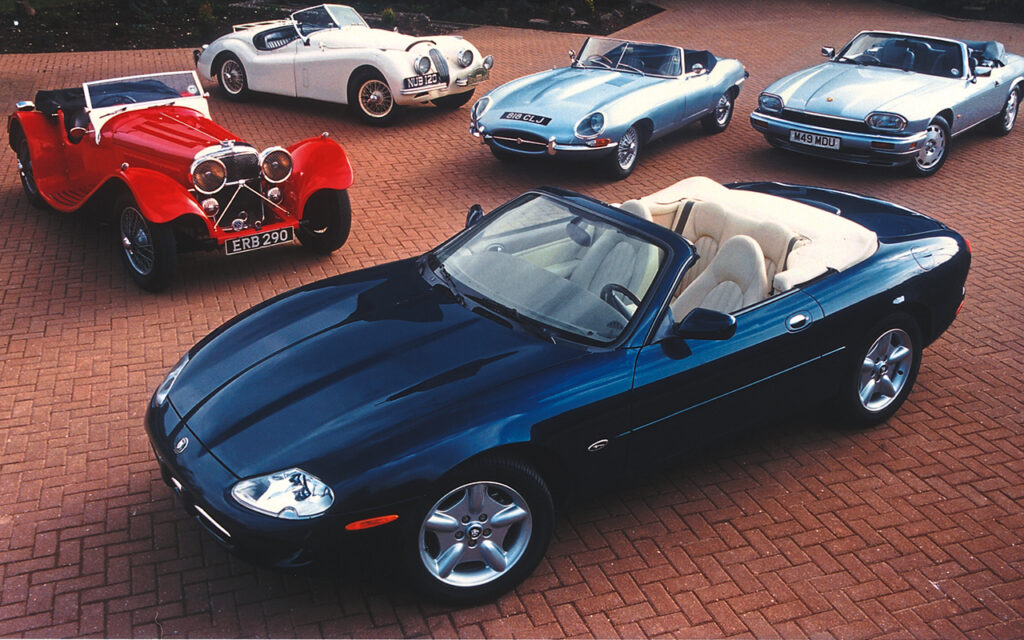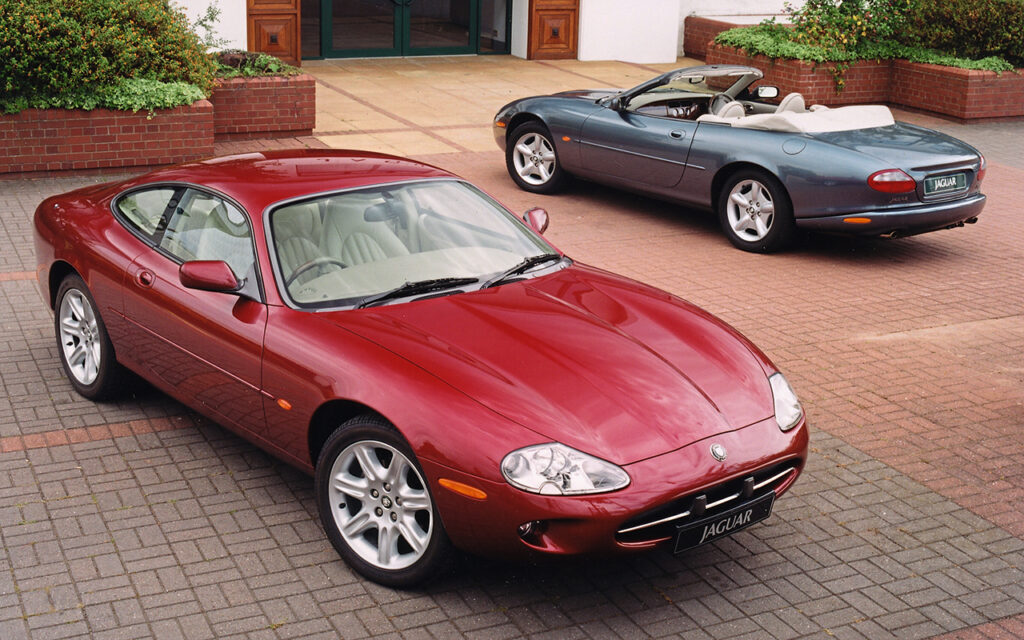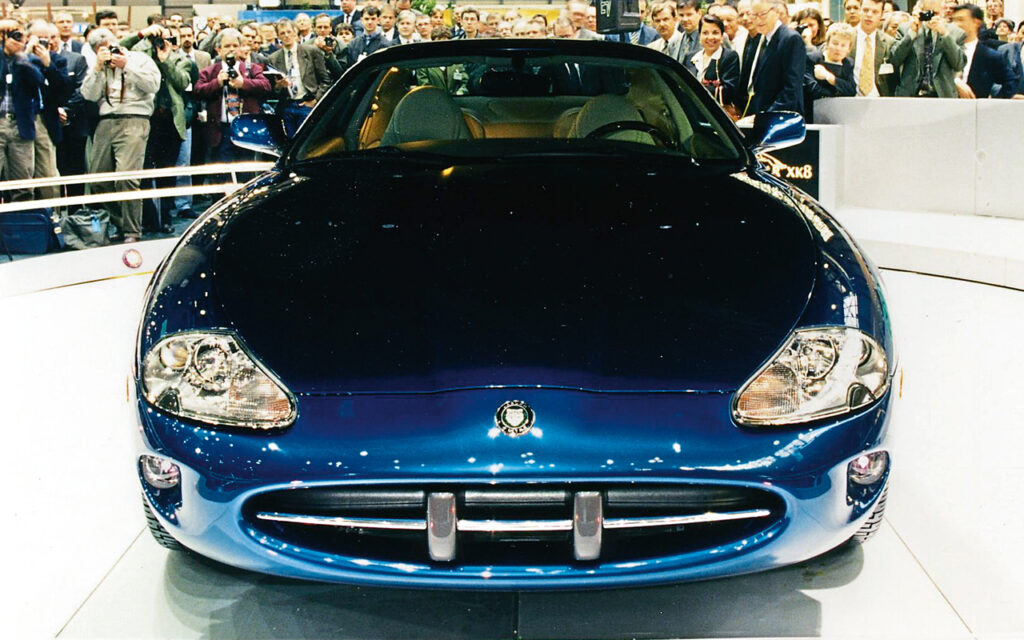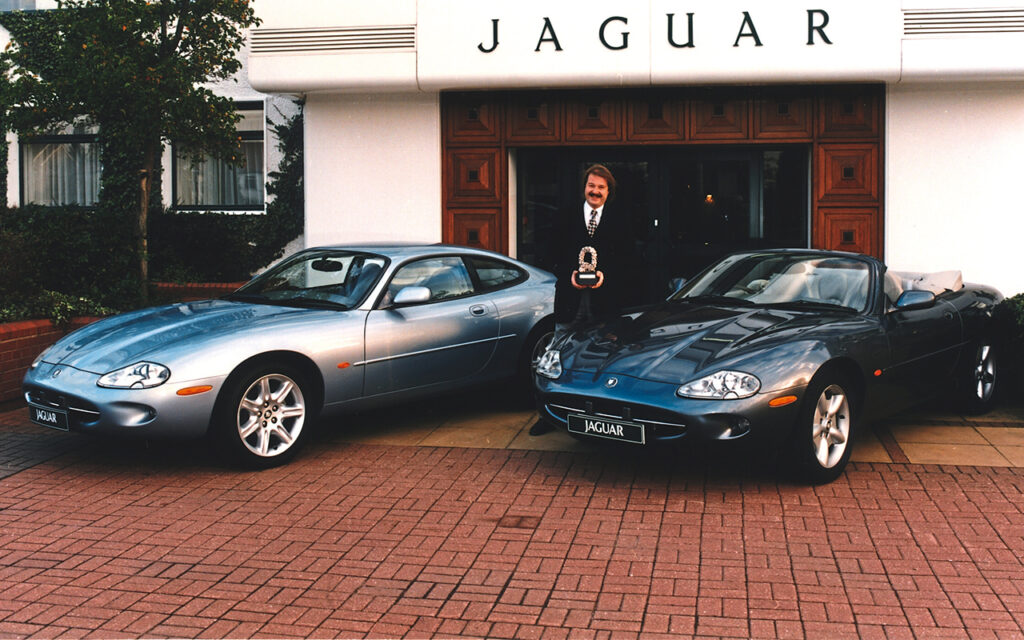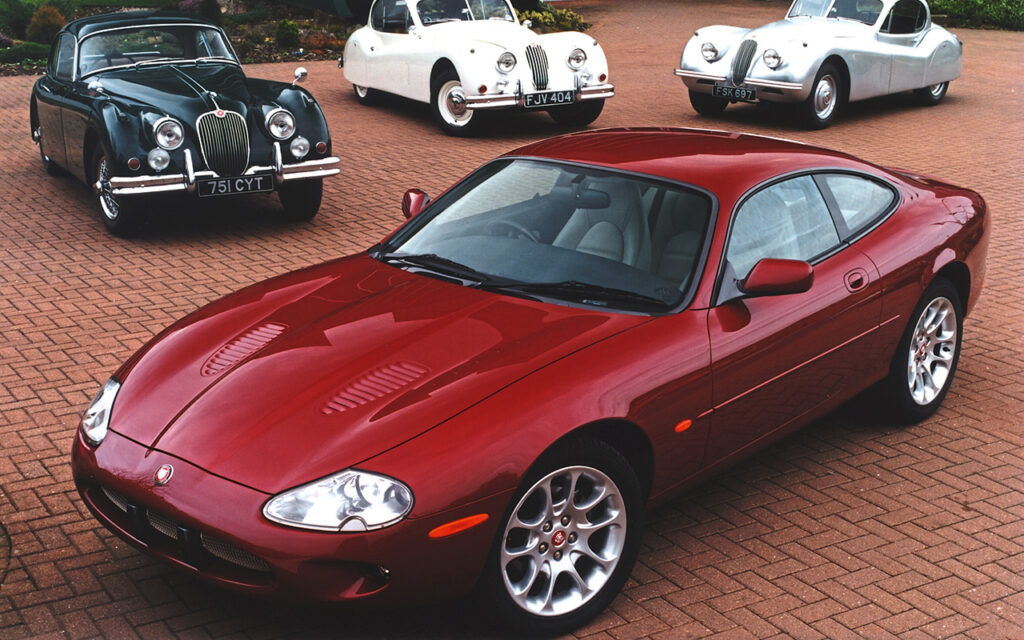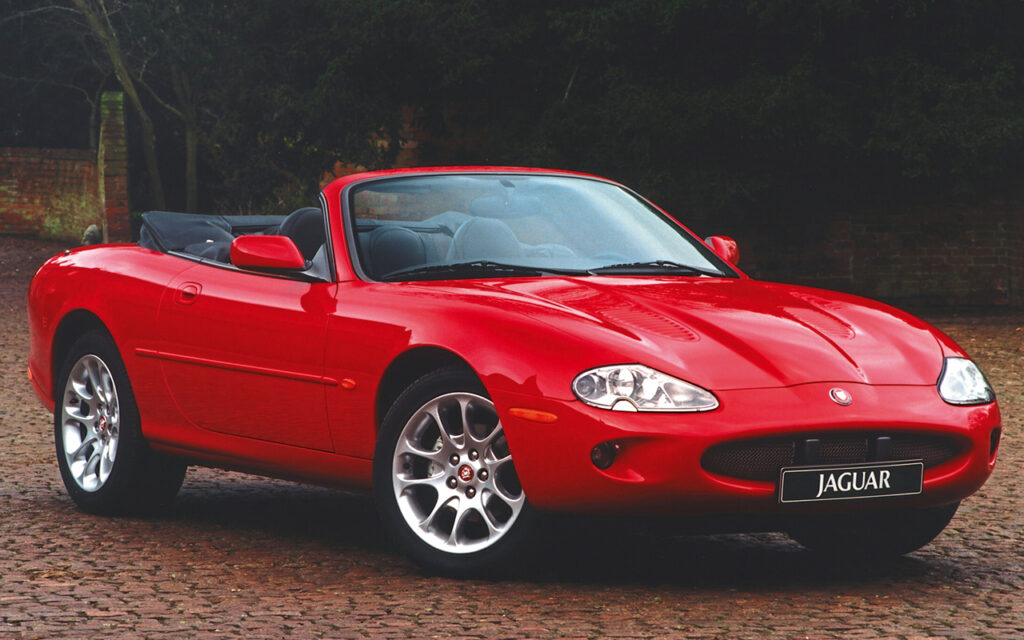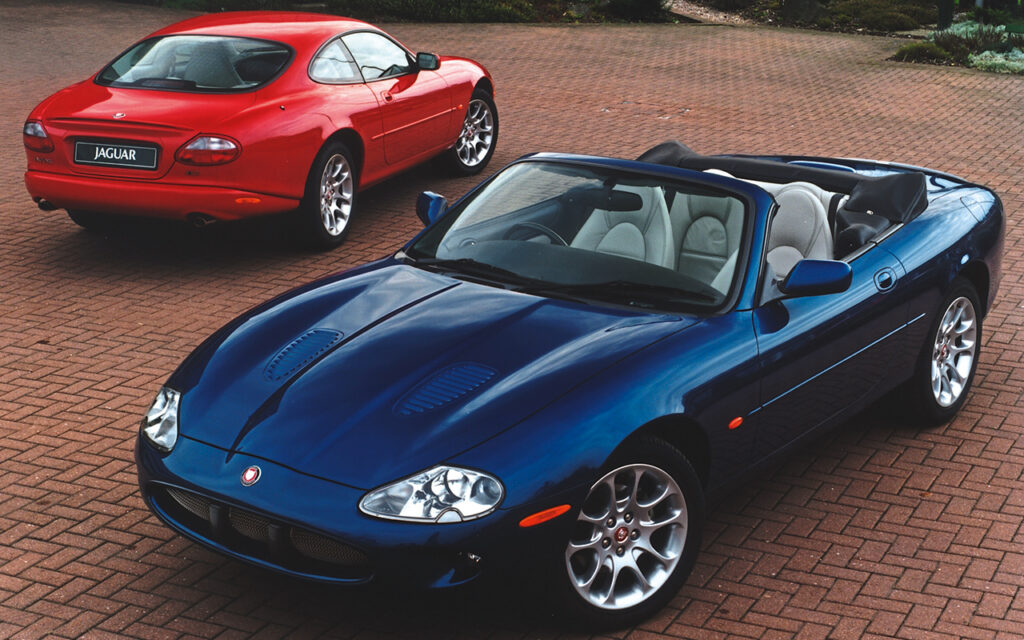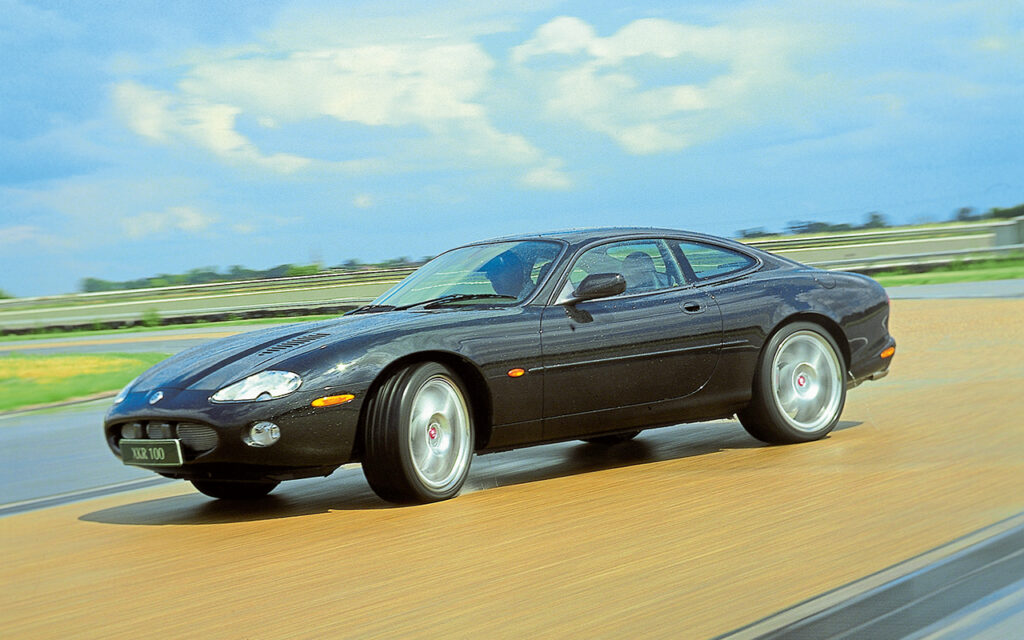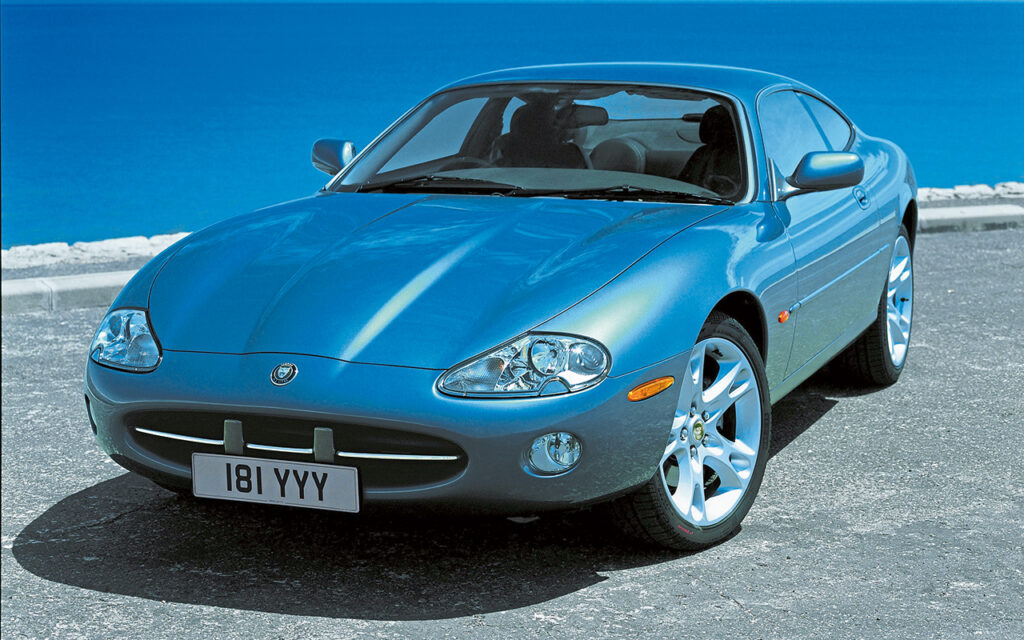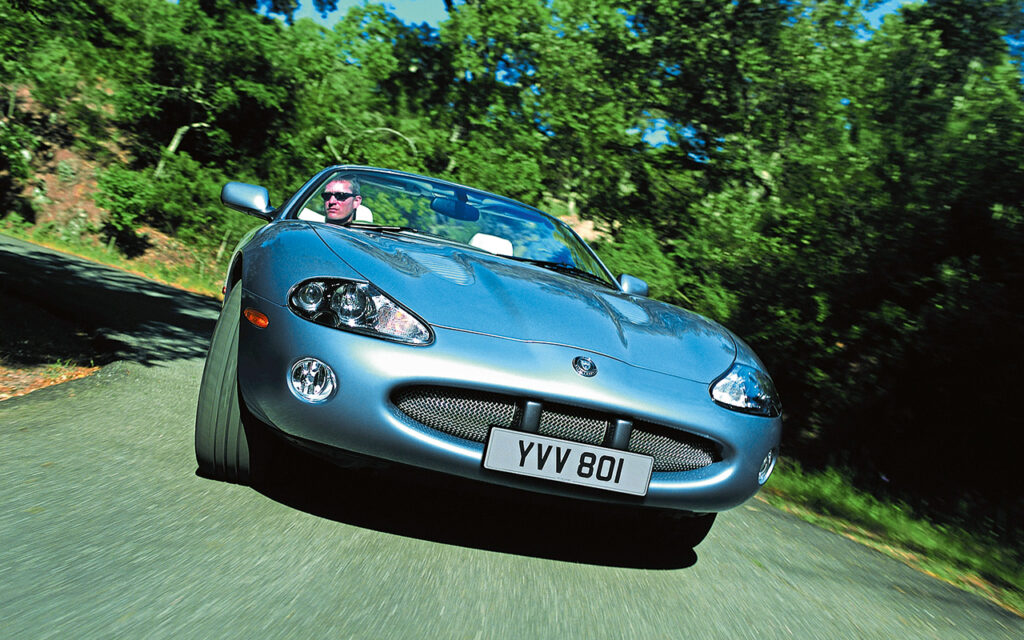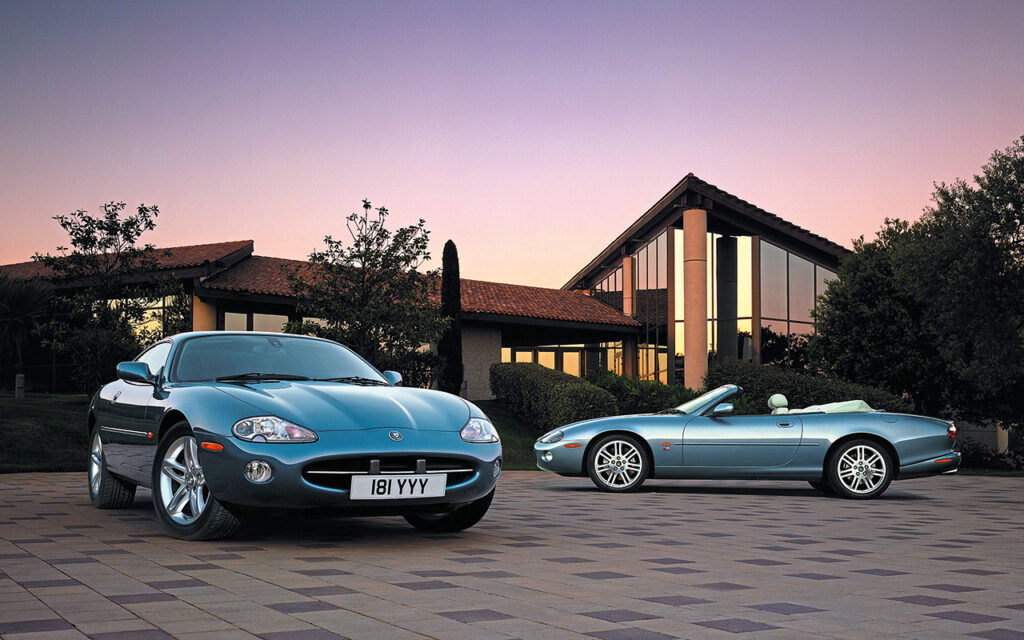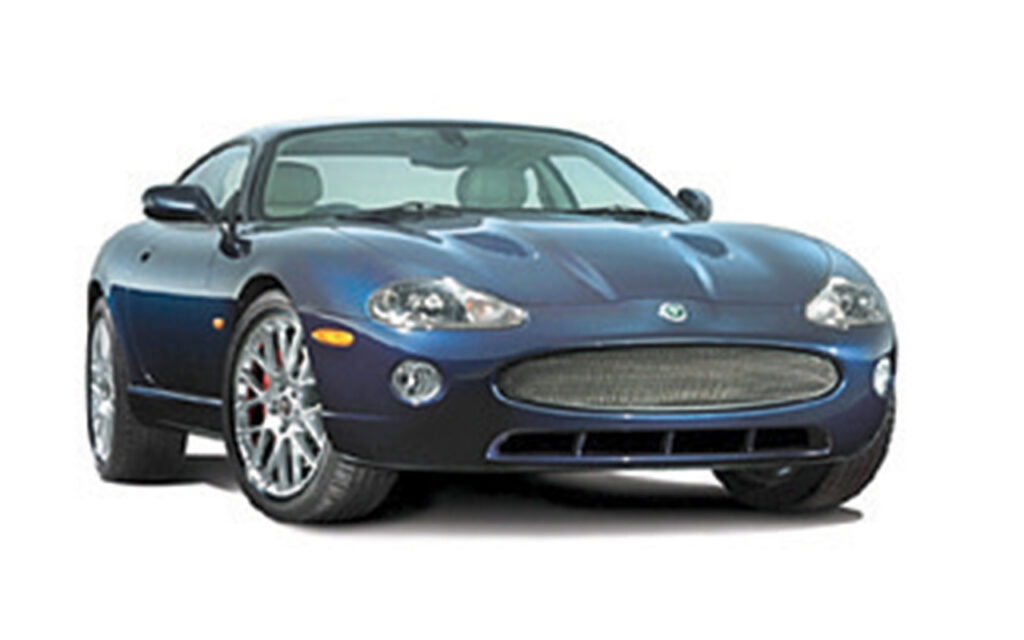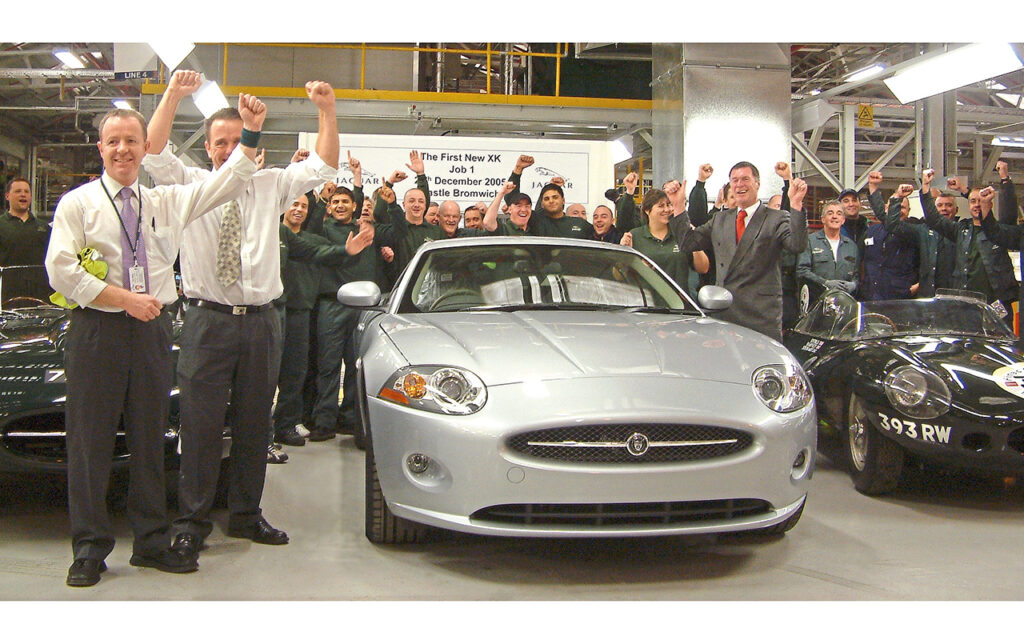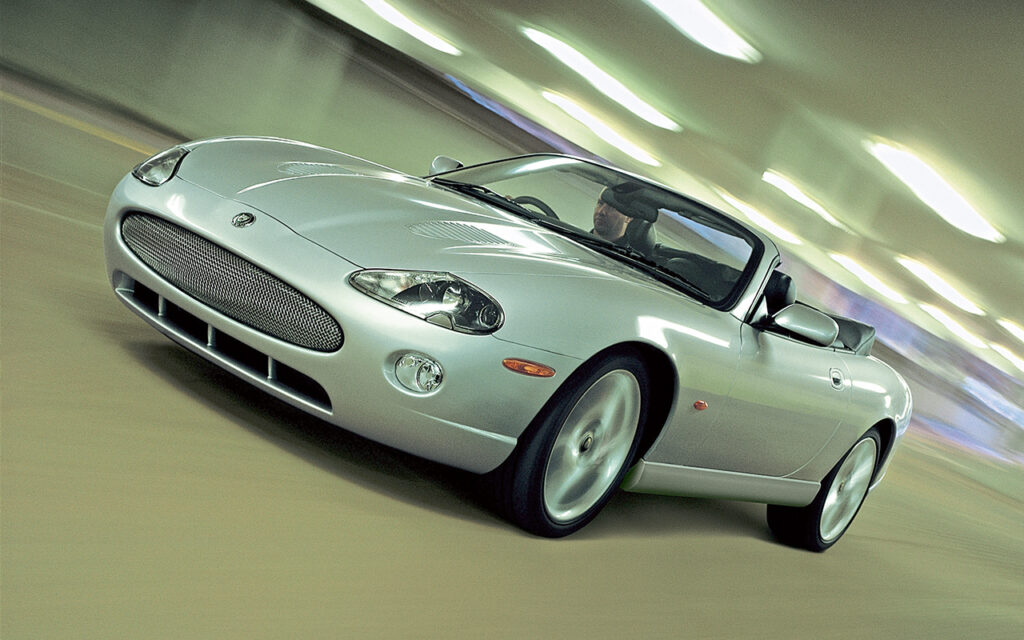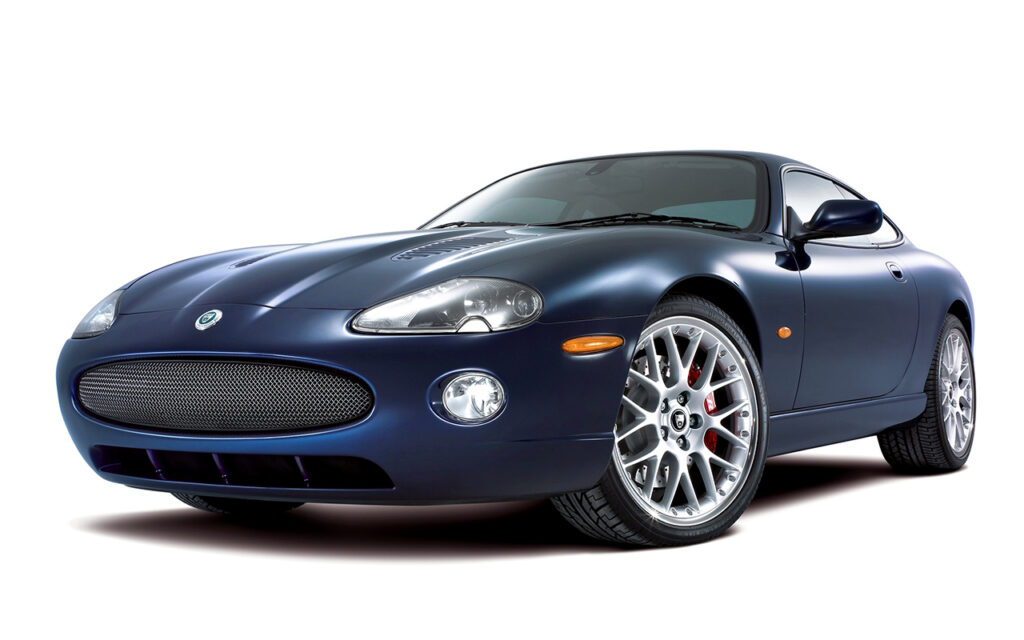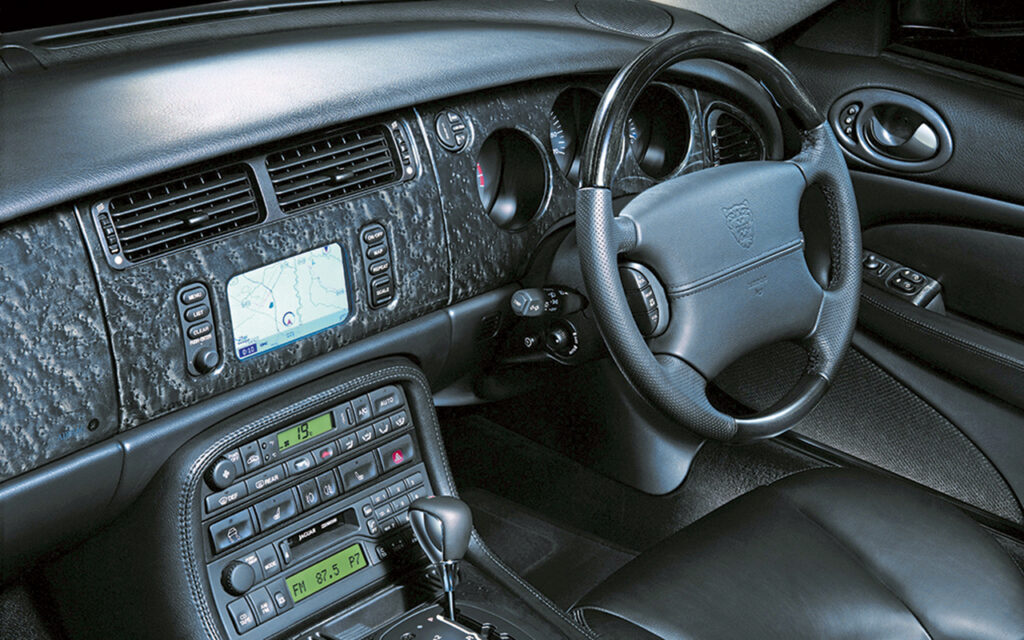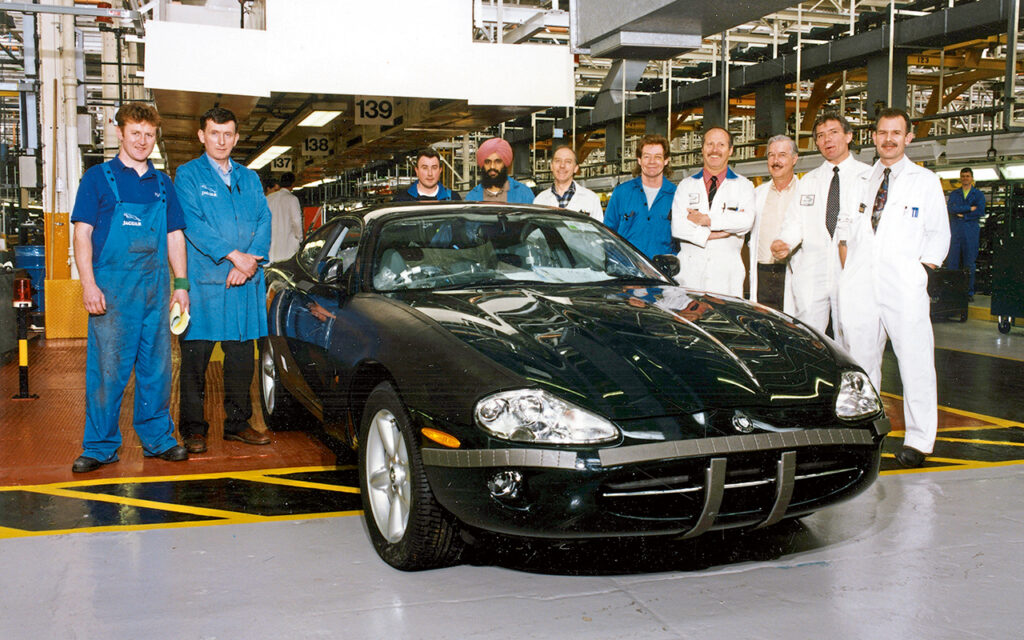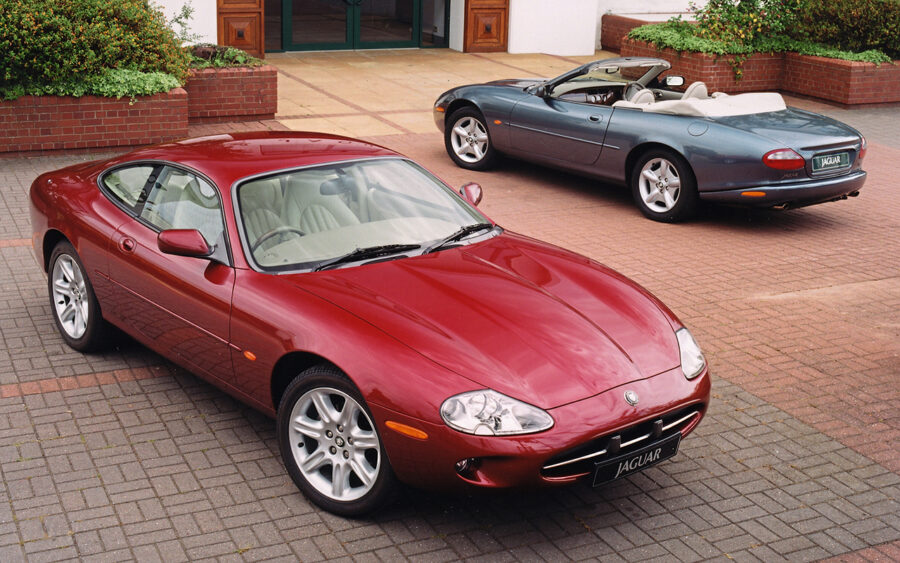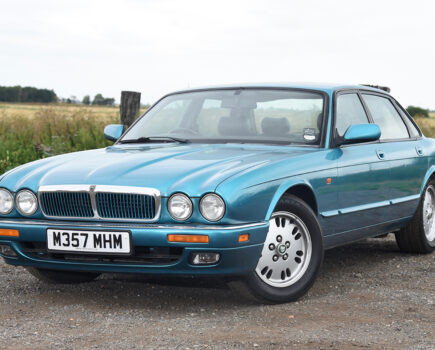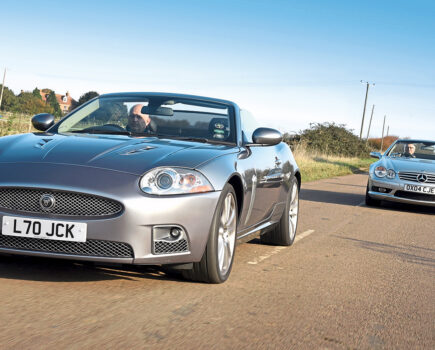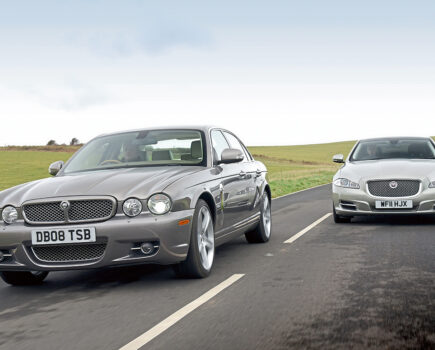The XK8 has a protracted origin story that cumulates with the creation one of Jaguar’s all-time best models
Words: Paul Wager
The XJ-S is now accepted, without question, as a fully fledged classic Jaguar but for much of its lifespan it lived in the shadow of the E-type. The boldly modern, forward-looking Jaguar XJ-S may have been technically superior to the E-type in every way, yet its grand touring focus took the marque in a different direction to the older car, one more in tune with changing times. By the early 90s retro was all the rage and, with the XJ-S itself ageing, a replacement was needed.
Work on replacing the sports coupe in Jaguar’s line-up made several false starts. The company developed the adventurous, Keith Helfet-designed XJ41, which was essentially a coupe version of the XJ40 saloon clothed in a modern interpretation of the curvaceous E-type styling, complete with turbocharged six-cylinder engines and, later, four-wheel drive.
The XJ41 had its roots in the early 80s, a time when the XJ-S really did look like its future was limited. However, when Ford took over Jaguar, the XJ41 – by then already dubbed ‘F-Type’ by an excited press – was dropped from the Jaguar line-up in 1989 because investment was instead concentrated on overhauling the ancient production facilities at Browns Lane. The effort wasn’t wasted, though, because elements of the ill-fated XJ41 were adapted to suit the XJ-S platform and used to create the Aston Martin DB7.
It was decided that the XJ-S would need to soldier on for a few more years while a replacement was developed. It was this stay of execution that justified extensive engineering work to produce the 1992 facelift cars (now XJS-badged with the hyphen dropped).
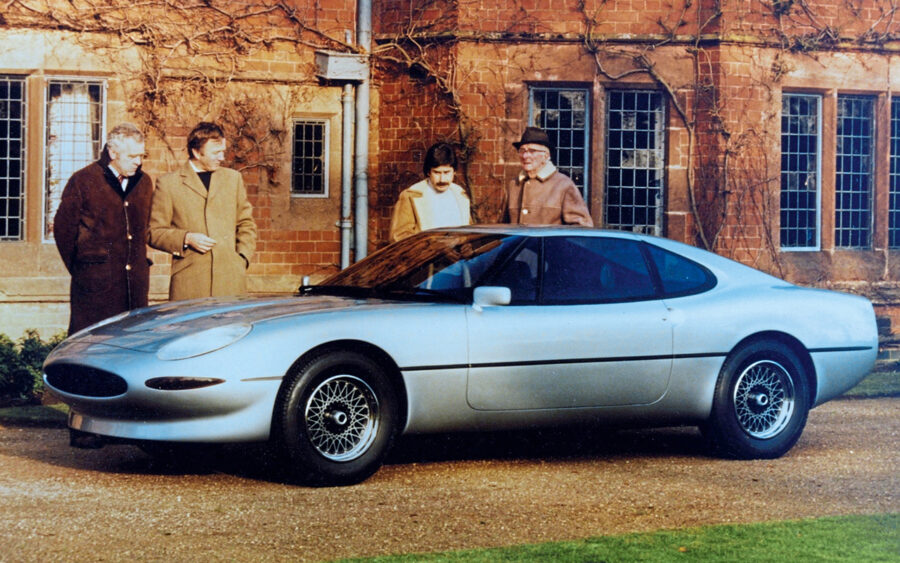
At the same time, work began on a new sports car project to be built on the XJS floorpan and powered by the new AJV8 engine, a project known inside Jaguar as X100. An internal design competition was established, with designs submitted from all over the Ford empire: its American Dearborn studio; Ghia, in Italy; and Jaguar’s team in Coventry. Unsurprisingly, it was the Jaguar design – again penned by Keith Helfet – that was chosen as the winner, with its curving lines and prominent snout, reminiscent of the E-type.
“After designing two other sports cars [XJ41 and XJ220] I knew exactly what I wanted. In fact, the shape of the side windows was very similar to the XJ220’s,” Helfet told P&PC. But, worried about internal politics over the car between Ford and Jaguar management, Keith turned down the job of taking the design into production. Instead, it became the work of his colleague, Fergus Pollock.
“The philosophy behind that car was that it should look traditional, like it had been handbuilt on an English wheel,” said Pollock in 2017. “Everyone who came into the studio thought it was stunning, and said we had to make it.”
With the project given the go-ahead in December 1993 and a launch date set for the Geneva Show in 1996 – chosen to coincide with the 35th anniversary of the E-type’s launch – the pressure was on. Bob Dover – who joined Jaguar in 1988 after stints at Massey Ferguson and Land Rover – was installed as the programme’s chief engineer (see p58), and furious work ensued, with XJS mules soon running V8 engines to test the drivetrain and suspension.
The front suspension used a new design based around unequal-length double wishbones carried on a lightweight die-cast aluminium subframe, with springs mounted directly to the body and hydraulic mounts between the subframe and engine. At the rear, the long-serving Jaguar independent set-up derived from the XJ saloons was used, with the driveshaft acting as the upper link and the assembly mounted on a rubber-mounted subframe. This was effectively the rear-end set-up as used on the X300 generation of the XJ saloon.
The bodyshell used 30 percent fewer panels than the XJS, yet offered torsional rigidity that was 25 percent better and, in coupe form, borrowed a trick from German manufacturers by raising and lowering the door glass a little when the handle was operated, to slot it under the sealing rubber.
The electronics on the new car used a sophisticated Controller Area Network (CAN) set-up that was capable of extremely fast data communication between the various control modules.
Due to the constraints of the XJS platform, the convertible model wasn’t engineered with a covered stowage compartment for the folded roof, a soft tonneau cover being provided instead, although few owners fit them regularly. The XK8 did, however, retain a 2+2 seating layout, making it a nominal four-seater – although the rear seats are very much for children and, even then, short journeys only. Still, it was an important marketing point and significantly widened the car’s potential audience.
“To produce a new car that had a new engine and gearbox was, even by industry standards, a brave thing to do,” continued Fergus. “Most companies will keep the engine or change the body, or keep the body and change the engine. To do both was almost unheard of.”
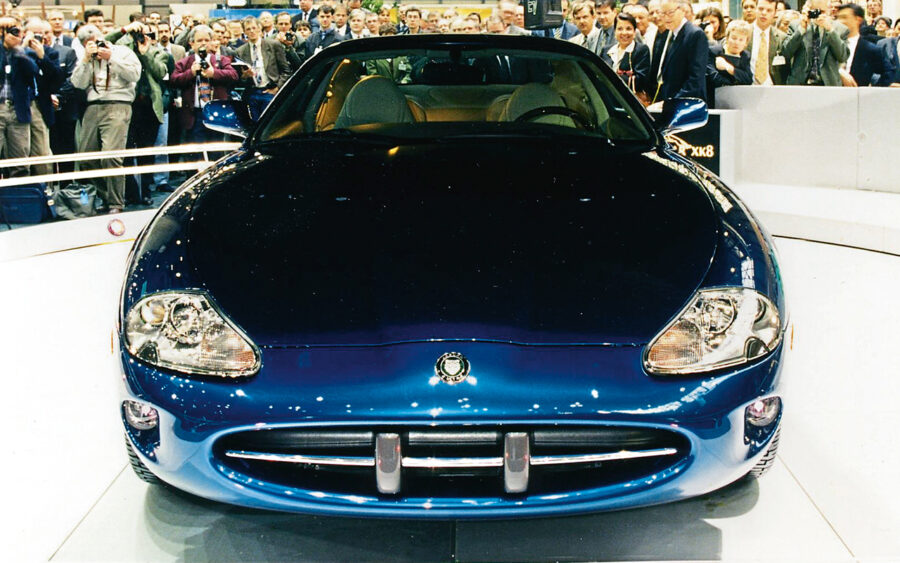
The car made its 1996 Swiss deadline and was unveiled to a positive reception, with many orders received from potential buyers in advance of its official on-sale date of the British Motor Show later that year. Its traditional Jaguar styling attracted buyers away from the more brutally styled, square-edged German marques, while the ride comfort and refinement lured owners into trading in their XJSs.
The new 4.0-litre V8 engine developed 290bhp, which meant performance was more than a match for its rivals, and the package was a success, reinvigorating the Jaguar brand. Curiously, while pundits mocked the Aston Martin DB7 for its XJS-derived underpinnings, nobody much saw fit to mention it where the XK8 was concerned. At launch, the range was simple: the XK8 came in any flavour you liked so long as it was a 290bhp 4.0-litre V8, in either coupe or convertible form.
The XKR was added in 1998. With an Eaton supercharger – first used in the X300 XJR in 1994 and followed by the X308 XJR in 1997 – power was hiked to 370bhp, making it the most powerful Jaguar sports car since the XJ220.
The cars were facelifted in 2000 for the 2001 model year, receiving new ‘jewel-style’ tail lights with chrome surrounds, a restyled rear bumper and faired-in front fog lamps, together with a chrome plinth with external release for the boot handle, and 18in wheels. The supercharged XKR also received larger tailpipe finishers and, inside, the seats were restyled and given electric adjustment, along with seat-mounted side airbags with the advanced ‘ARTS’ airbag deployment system to avoid firing the airbags unnecessarily. The supercharged engine was also upgraded with a new engine management system, reducing CO2 emissions by 12 percent and incorporating an engine oil temperature sensor, plus a drive-by-wire electronic throttle and exhaust gas recirculation.
A 320-watt Alpine sound system was on the options list, and the standard-fit immobiliser gained a rolling code transponder for improved security. The six-disc CD changer became standard on all models, as did the 8×17 ‘Lamina’ style wheel.
The car received a further facelift in 2002 for the 2003 model year. The changes were more extensive and Jaguar’s marketing people referred to the model as the ‘new generation’ XK8. The big change was stroking the AJ28 version of the AJV8 from its original 3,996cc to 4,196cc, in which form it was known as the AJ34. The new 4.2-litre engine was good for 300bhp with 310lb ft torque, or 400bhp and 408lb ft torque in supercharged form.
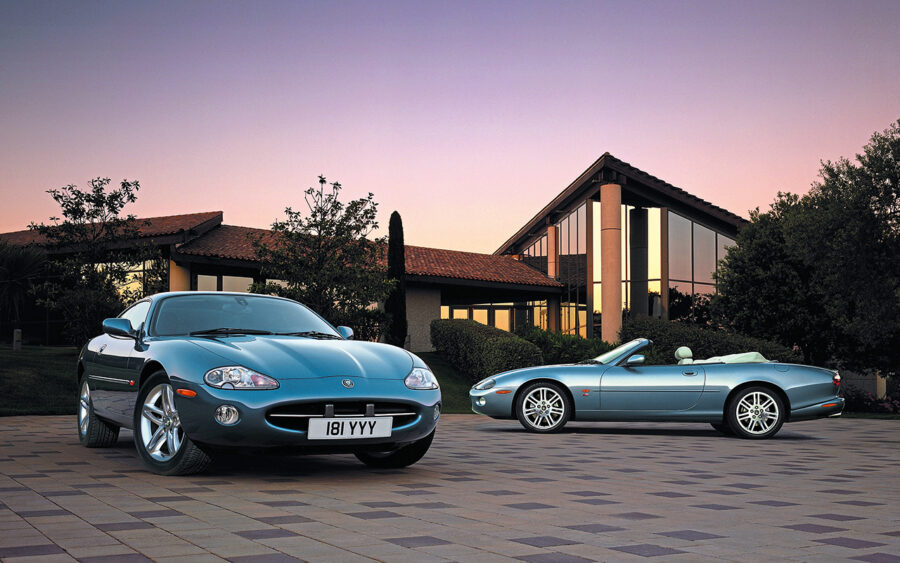
A new ZF six-speed 6HP26 transmission was paired with an electronic control system that ‘learned’ the driver’s style and continually adjusted the shift pattern to suit. Like previous Jaguars, the shift used the company’s traditional J-gate selector. The new gearbox was reckoned to be lighter and more compact than the previous five-speed ’box. The final-drive ratio was also changed to accommodate the new transmission. Brembo brakes from the ‘R’ options range became standard on the XKR.
External changes involved new badging and the addition of new Xenon headlamps as standard on the XKR and optional on the XK8. New paint and trim colours were introduced and three new wheel styles were added.
At the same time Jaguar introduced its ‘R’ options packages, which included Recaro seats, Brembo brakes and interior details. Coupe models could also be ordered with an uprated ‘R’ performance suspension.
The 2003 cars also gained the full array of up-to-date traction and stability aids, including dynamic stability control (DSC), which takes the car’s lateral movement, steering wheel position and speed into account and applies the brakes or reduces engine torque to stabilise the car if it isn’t travelling in the intended direction, and emergency brake assist (EBA), which detects a panic-braking manoeuvre and automatically applies the full force of the braking system. While cruise control became standard across the range, adaptive cruise control (ACC), a clever system that uses microwave technology to maintain a set distance from the car in front, was made optional.
The facelifted models gained new, sculpted Growler badging on the nose and the leaping Jaguar motif on interior panels.
The XK8 was refreshed again in 2004, with a revised nose section with a deeper mouth for the front air intake, new sill lower covers, plus an updated rear bumper and rear spoiler. There were also new alloys and exterior colours.
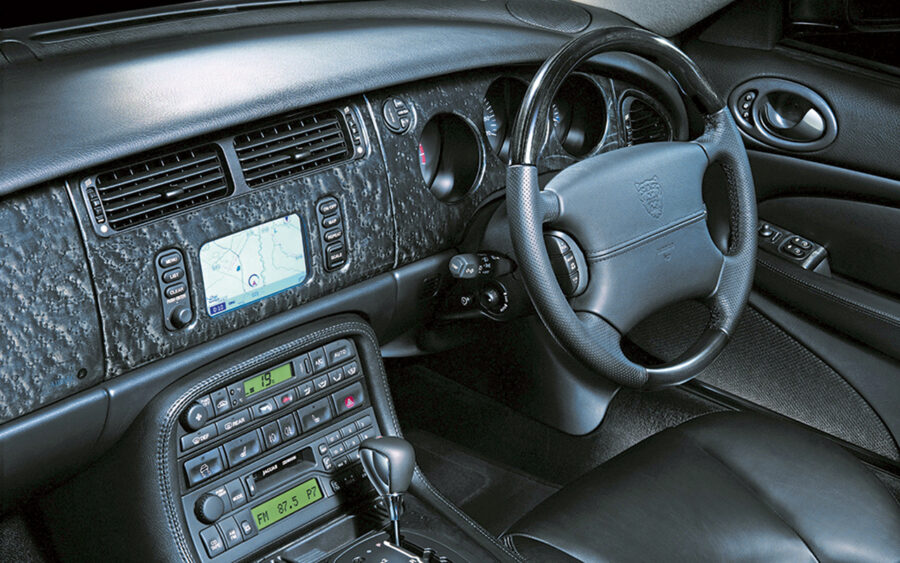
Other than a limited-edition, run-out model (the 4.2-S), the XK8 range remained unchanged until 27 May 2005, when the final car – a Zircon Blue XKR coupe, see p84 – rolled off the production line. In nine years, Jaguar produced 90,064 X100s, making it the company’s second most successful sports car after the XJ-S.
Jaguar had already revealed the car’s replacement, or rather a concept version – the Advanced Lightweight Coupe – in January 2005, at the Detroit Motor Show. The production model made its debut at Frankfurt in September before going on sale in early 2006. Codenamed X150, but officially known as the XK (the 8 being dropped), it looked similar at first glance, but with more sharply chiselled lines courtesy of Jaguar’s design director at the time, Ian Callum.
The X100 XK8 may have reached its 25th anniversary, but, while interest continues to grow as more people discover the car’s many strengths, its history is far from finished.
Jaguar XK8 (X100) timeline
1980
Jaguar XJ41/XJ42 project begins as proposed E-type spiritual successor.
1989
XJ41/XJ42 dropped in favour of production improvements at Jaguar’s Brown Lane facility. Concept would go on to form the basis of the Aston Martin DB7 instead.
1992
XJ-S facelift arrives badged XJS. Work starts on X100 project.
1996
XK8 revealed at the Geneva Motor Show; on sale later that year coinciding with the British Motor Show.
1998
XKR arrives with 370bhp; most powerful Jaguar since XJ220.
2000
Facelifted Jaguar XK8 arrives for 2001 model year.
2002
Second facelift arrives for 2003 model year, with various technological and performance updates.
2004
Last model update arrives with light styling updates, new wheels and colours.
2005
Advanced Lightweight Coupe concept shown at Detroit Motorshow in January.
Final X100 – a Zicon Blue XKR – is built in May.
2006
Replacement for the X100 – the X150 – goes on sale.
